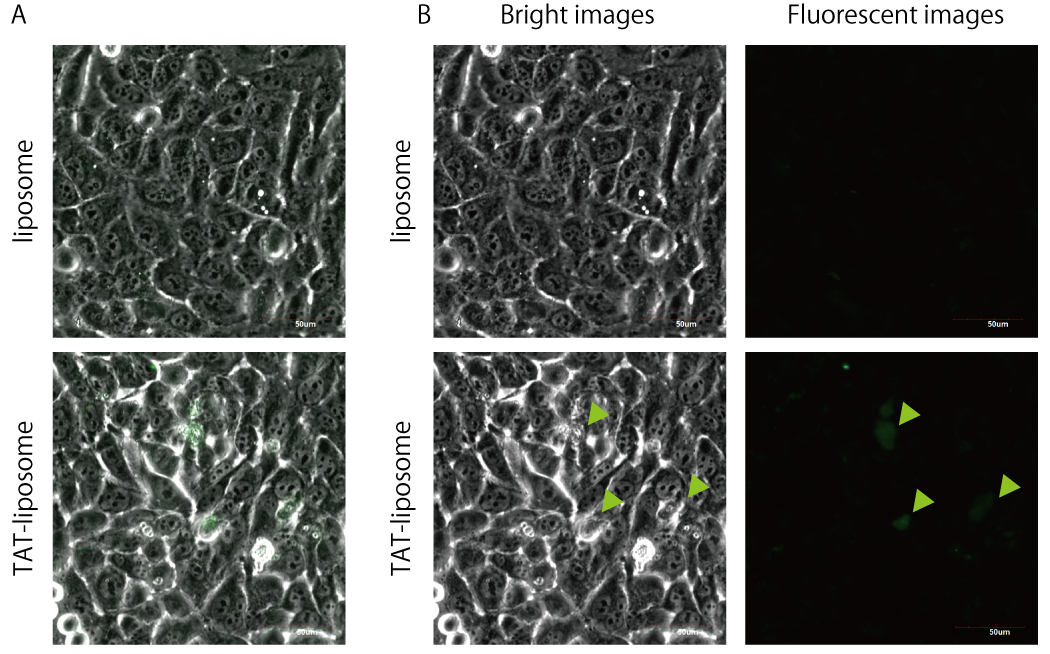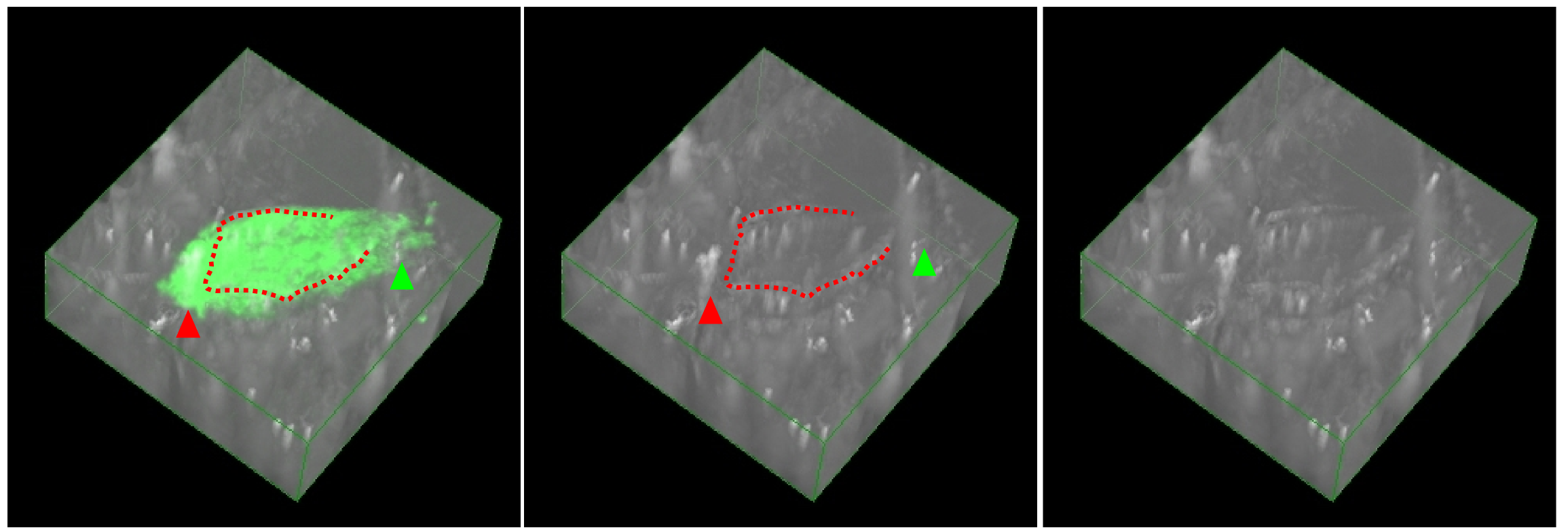Team:Kyoto/CiC/Results
From 2009.igem.org
(→Confirmation of function of TAT-liposome) |
(→Confirmation of function of TAT-liposome) |
||
| Line 35: | Line 35: | ||
with or without TAT-anchor which was synthesized or translated ''in vitro''. | with or without TAT-anchor which was synthesized or translated ''in vitro''. | ||
The size of the liposome without TAT was too small to distinguish individual particle, while that with TAT | The size of the liposome without TAT was too small to distinguish individual particle, while that with TAT | ||
| - | showed the large coalesced liposomes (Fig. NUMBER-(A)). The coalesced liposomes | + | showed the large coalesced liposomes (Fig. NUMBER-(A)). The coalesced liposomes might be caused by the |
aggregation between TAT peptides or electric screening effect of TAT against liposome. | aggregation between TAT peptides or electric screening effect of TAT against liposome. | ||
| + | We, any way, added the prepared liposomes into the medium of cells. | ||
Since the cells incubated with liposome did not emit any fluorescent signal, no liposome was uptaken by cells | Since the cells incubated with liposome did not emit any fluorescent signal, no liposome was uptaken by cells | ||
| - | nonspecifically. In contrast, the TAT-liposome | + | nonspecifically. In contrast, the TAT-liposome adhered on some cells (Fig. NUMBER-(B)). |
| - | + | We, thus, observed the cells by a conforcal microscopy to reveal whether the liposomes was uptaken or not. | |
| - | + | The sliced image of the cell indicates that the liposome was taken partially at least since | |
| + | fluorescent signal was within the outline of the cross-section of the cell (Described in Fig. NUMBER as red dashed-line). | ||
| + | However, the fluorescent signal was also detected in the outside of the outline around the green arrowhead shown in | ||
| + | Fig. NUMBER. | ||
[[Image:Liposome-shape.png|700px|thumb|left|(A)Fluorescent images of liposome with or without TAT-anchor. (B)Microscopic images of the cells incubated with liposome. The green arrowheads indicated the positions of the fluorescent signals.]] | [[Image:Liposome-shape.png|700px|thumb|left|(A)Fluorescent images of liposome with or without TAT-anchor. (B)Microscopic images of the cells incubated with liposome. The green arrowheads indicated the positions of the fluorescent signals.]] | ||
Revision as of 16:47, 21 October 2009
- Home
- Cells in Cells
- Results & Discussion
Results & Discussion
Result of Subgoal A
Confirmation of function of TAT-liposome
To confirm the function of the constructed TAT-anchor peptide, we prepare the liposome containing NBD-PE with or without TAT-anchor which was synthesized or translated in vitro. The size of the liposome without TAT was too small to distinguish individual particle, while that with TAT showed the large coalesced liposomes (Fig. NUMBER-(A)). The coalesced liposomes might be caused by the aggregation between TAT peptides or electric screening effect of TAT against liposome. We, any way, added the prepared liposomes into the medium of cells. Since the cells incubated with liposome did not emit any fluorescent signal, no liposome was uptaken by cells nonspecifically. In contrast, the TAT-liposome adhered on some cells (Fig. NUMBER-(B)). We, thus, observed the cells by a conforcal microscopy to reveal whether the liposomes was uptaken or not. The sliced image of the cell indicates that the liposome was taken partially at least since fluorescent signal was within the outline of the cross-section of the cell (Described in Fig. NUMBER as red dashed-line). However, the fluorescent signal was also detected in the outside of the outline around the green arrowhead shown in Fig. NUMBER.
Result of Subgoal B
Result of Subgoal C
sig-GFP expression in HeLa
To confirm the function of the signal sequence for importing protein into mitochondria, we compared the expressioin pattern of sig-GFP or GFP with mitotracker signal. The GFP signal was detected throughout the cell except for the black granules in the cytoplasm or the nuclear, while sig-GFP signal showed the string-like pattern in the cytoplasm. The black granules in the cytoplasm observed in the GFP-expressing cell were stained by mitotracker, and the result indicated that the GFP was normally eliminated from mitochondria (Fig. NUMBER, GFP and mitotracker merged). In case of sig-GFP, mitochondria stained by a mitotracker and the GFP signal showed almost the same pattern. the yellow color in the merge images (Fig. Number, sig-GFP and mitotracker merged) suggested that the sig-GFP and mitochondria were colocalized in the HeLa cell. We, consequently, our constructed signal sequence has the function of importing protein into mitochondria as expected.
 "
"

